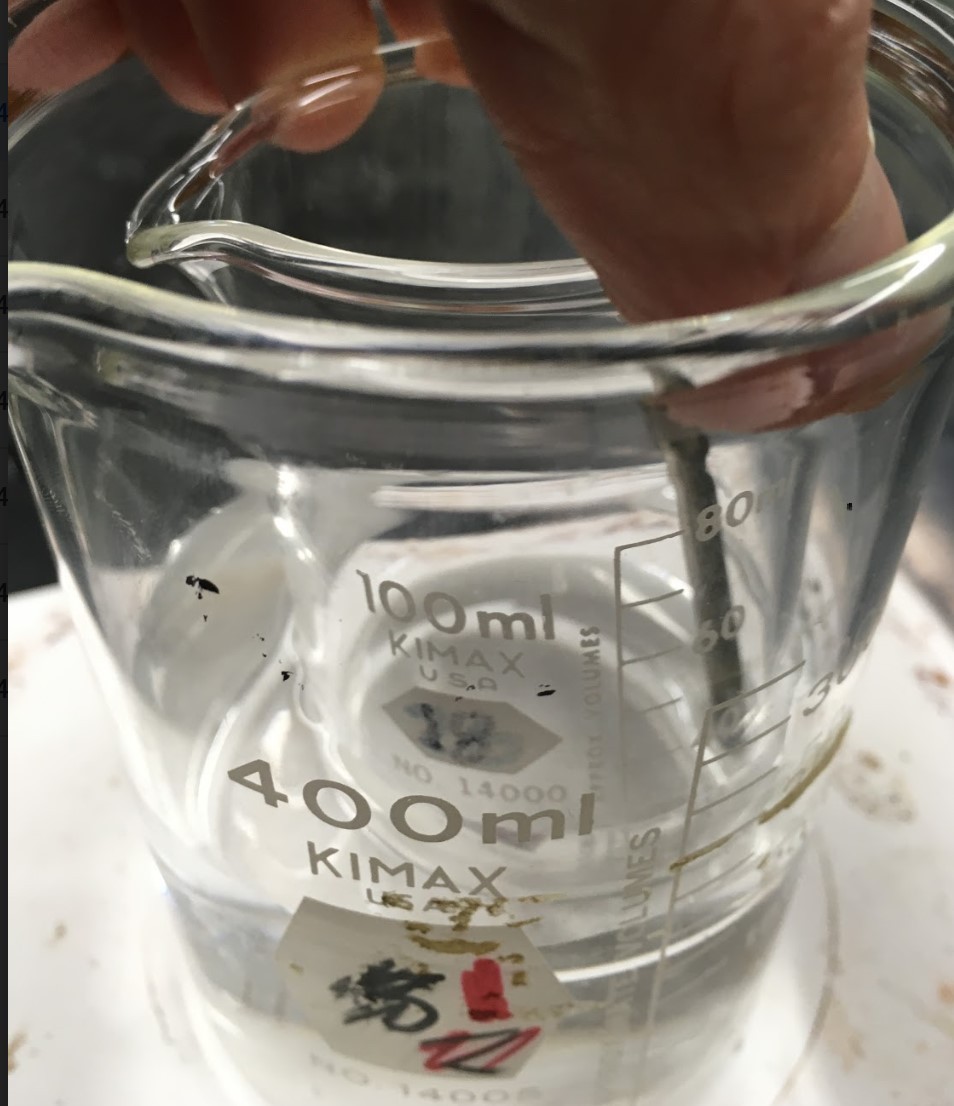Determining molecular polarity is crucial for understanding chemical behavior. COMPARE.EDU.VN offers an in-depth exploration on how to compare the polarity of molecules, empowering you to predict their interactions and properties. This guide simplifies complex concepts like dipole moments and molecular geometry. Learn about bond polarity, molecular shape, and electronegativity differences.
1. Understanding Molecular Polarity: The Basics
Molecular polarity refers to the distribution of electrical charge within a molecule. A molecule is considered polar if it has an uneven distribution of electron density, resulting in partial positive (δ+) and partial negative (δ-) charges. Conversely, a nonpolar molecule has an even distribution of electron density. Understanding polarity is essential because it influences intermolecular forces, solubility, boiling points, and other physical and chemical properties. Think of it like understanding why oil and water don’t mix – polarity is the key.
1.1. Defining Polarity
Polarity arises from differences in electronegativity between atoms in a chemical bond. Electronegativity is the ability of an atom to attract electrons towards itself in a chemical bond. When two atoms with different electronegativities form a bond, the more electronegative atom pulls the electron density closer, creating a dipole moment. This dipole moment is a measure of the polarity of the bond.
1.2. Importance of Understanding Molecular Polarity
Understanding molecular polarity helps predict how molecules interact with each other. Polar molecules tend to dissolve in polar solvents (like water), while nonpolar molecules dissolve in nonpolar solvents (like oil). This “like dissolves like” principle is fundamental in chemistry. Furthermore, molecular polarity influences the strength of intermolecular forces, such as dipole-dipole interactions and hydrogen bonds, which in turn affect the physical properties of substances.
2. Key Factors Influencing Molecular Polarity
Several factors contribute to the overall polarity of a molecule. These include the electronegativity difference between bonded atoms, the molecular geometry, and the presence of lone pairs of electrons. Each of these factors plays a crucial role in determining whether a molecule is polar or nonpolar.
2.1. Electronegativity and Bond Polarity
The difference in electronegativity between two bonded atoms determines the polarity of the bond. If the electronegativity difference is significant (typically greater than 0.4 on the Pauling scale), the bond is considered polar. The atom with the higher electronegativity will have a partial negative charge (δ-), while the other atom will have a partial positive charge (δ+).
 Electronegativity trend on the periodic table showing how it increases from left to right and decreases from top to bottom
Electronegativity trend on the periodic table showing how it increases from left to right and decreases from top to bottom
2.2. Molecular Geometry and Polarity
Molecular geometry, or shape, is crucial in determining whether a molecule is polar. Even if a molecule has polar bonds, the overall molecule may be nonpolar if the bond dipoles cancel each other out due to symmetry. For example, carbon dioxide (CO2) has two polar bonds, but because it is linear, the dipoles cancel, making the molecule nonpolar.
2.3. Lone Pairs of Electrons and Polarity
Lone pairs of electrons on the central atom can significantly affect molecular polarity. Lone pairs create an area of high electron density, which can disrupt the symmetry of the molecule and lead to a net dipole moment. For instance, water (H2O) has two lone pairs on the oxygen atom, causing the molecule to be bent and polar.
3. Steps to Determine Molecular Polarity
Determining whether a molecule is polar involves a systematic approach. Follow these steps to analyze the polarity of any molecule:
3.1. Step 1: Draw the Lewis Structure
The first step is to draw the Lewis structure of the molecule. This shows how the atoms are connected and the distribution of valence electrons. The Lewis structure is essential for visualizing the bonds and lone pairs.
3.2. Step 2: Determine the Molecular Geometry
Use the VSEPR (Valence Shell Electron Pair Repulsion) theory to determine the molecular geometry. VSEPR theory states that electron pairs around a central atom will arrange themselves to minimize repulsion. This arrangement determines the shape of the molecule. Common molecular geometries include linear, trigonal planar, tetrahedral, bent, and trigonal pyramidal.
3.3. Step 3: Identify Polar Bonds
Identify any polar bonds in the molecule based on the electronegativity difference between the atoms. Use electronegativity values or a periodic table with electronegativity trends to determine which bonds are polar.
3.4. Step 4: Determine the Dipole Moments
Draw dipole moment vectors for each polar bond. The arrow points towards the more electronegative atom, and the length of the arrow indicates the magnitude of the dipole moment.
3.5. Step 5: Sum the Dipole Moments
Determine the net dipole moment of the molecule by summing the individual bond dipoles. If the dipole moments cancel each other out due to symmetry, the molecule is nonpolar. If there is a net dipole moment, the molecule is polar.
4. Examples of Polar and Nonpolar Molecules
To illustrate how to determine molecular polarity, let’s look at several examples of common molecules.
4.1. Water (H2O): A Polar Molecule
Water (H2O) is a classic example of a polar molecule. The oxygen atom is more electronegative than the hydrogen atoms, creating polar bonds. The molecule is bent due to the two lone pairs on the oxygen atom, so the bond dipoles do not cancel. This results in a net dipole moment, making water a polar molecule.
The bent shape of the water molecule causes a net dipole moment.
4.2. Carbon Dioxide (CO2): A Nonpolar Molecule
Carbon dioxide (CO2) has two polar bonds between carbon and oxygen. However, the molecule is linear, and the two bond dipoles point in opposite directions. Because the dipoles are equal in magnitude and opposite in direction, they cancel each other out, resulting in a net dipole moment of zero. Thus, carbon dioxide is nonpolar.
4.3. Ammonia (NH3): A Polar Molecule
Ammonia (NH3) is another polar molecule. The nitrogen atom is more electronegative than the hydrogen atoms, creating polar bonds. The molecule has a trigonal pyramidal shape due to the lone pair on the nitrogen atom, so the bond dipoles do not cancel. This results in a net dipole moment, making ammonia polar.
The trigonal pyramidal shape of ammonia contributes to its polarity.
4.4. Methane (CH4): A Nonpolar Molecule
Methane (CH4) has four carbon-hydrogen bonds. The electronegativity difference between carbon and hydrogen is small, so the bonds are considered nonpolar. Additionally, methane has a tetrahedral shape, which is highly symmetrical. The bond dipoles cancel each other out, resulting in a net dipole moment of zero. Therefore, methane is nonpolar.
5. Tools and Resources for Determining Polarity
Several tools and resources can help you determine the polarity of molecules.
5.1. Electronegativity Charts
Electronegativity charts show the electronegativity values of different elements. These charts can help you quickly determine the polarity of a bond.
5.2. VSEPR Theory Guides
VSEPR theory guides provide detailed explanations of how to predict molecular geometry based on the number of electron pairs around the central atom.
5.3. Online Molecular Polarity Calculators
Online molecular polarity calculators can help you determine the polarity of a molecule by inputting the molecular structure and electronegativity values.
6. Advanced Concepts in Molecular Polarity
For a deeper understanding of molecular polarity, consider these advanced concepts:
6.1. Vector Summation of Dipole Moments
The net dipole moment of a molecule is the vector sum of all the individual bond dipoles. This involves considering both the magnitude and direction of each dipole moment.
6.2. Polarizability and Induced Dipoles
Polarizability is the ability of a molecule to form temporary dipoles in response to an external electric field. Induced dipoles play a role in intermolecular forces, such as London dispersion forces.
6.3. Applications of Molecular Polarity
Understanding molecular polarity is crucial in many fields, including drug design, materials science, and environmental chemistry. For example, drug molecules must have the correct polarity to interact with biological targets.
7. Common Mistakes to Avoid When Determining Polarity
When determining molecular polarity, avoid these common mistakes:
7.1. Ignoring Molecular Geometry
Failing to consider molecular geometry is a common mistake. Even if a molecule has polar bonds, it may be nonpolar if the geometry is symmetrical and the dipoles cancel.
7.2. Assuming All Bonds Between Different Elements Are Polar
Not all bonds between different elements are polar. If the electronegativity difference is small, the bond may be considered nonpolar.
7.3. Overlooking Lone Pairs
Overlooking lone pairs on the central atom can lead to incorrect predictions of molecular geometry and polarity.
8. The Role of COMPARE.EDU.VN in Understanding Polarity
COMPARE.EDU.VN can be a valuable resource for understanding and comparing the polarity of molecules. Our website offers detailed explanations, examples, and tools to help you master this important concept.
8.1. Comprehensive Guides and Tutorials
COMPARE.EDU.VN provides comprehensive guides and tutorials on molecular polarity, covering everything from the basics to advanced concepts.
8.2. Interactive Tools and Calculators
Our website features interactive tools and calculators that can help you determine the polarity of molecules quickly and accurately.
8.3. Expert Comparisons and Analyses
COMPARE.EDU.VN offers expert comparisons and analyses of different molecules, highlighting their polarity and properties.
9. Polarity in Real-World Applications
Molecular polarity is not just a theoretical concept; it has numerous real-world applications.
9.1. Solvents and Solubility
The polarity of a solvent determines its ability to dissolve different substances. Polar solvents like water dissolve polar solutes, while nonpolar solvents like hexane dissolve nonpolar solutes.
9.2. Intermolecular Forces
Molecular polarity influences the strength of intermolecular forces, which in turn affect the physical properties of substances, such as boiling point and melting point.
9.3. Biological Systems
Molecular polarity plays a crucial role in biological systems. For example, the polarity of water is essential for many biological processes, and the polarity of drug molecules affects their ability to bind to biological targets.
10. FAQ About Comparing Polarity of Molecules
Q1: What is electronegativity, and how does it affect molecular polarity?
Electronegativity is the ability of an atom to attract electrons in a chemical bond. A significant difference in electronegativity between two bonded atoms leads to a polar bond and can contribute to overall molecular polarity.
Q2: How does molecular geometry influence molecular polarity?
Molecular geometry determines whether bond dipoles cancel each other out. Symmetrical geometries can result in nonpolar molecules even with polar bonds, while asymmetrical geometries often lead to polar molecules.
Q3: What is a dipole moment, and how is it measured?
A dipole moment is a measure of the polarity of a molecule. It is a vector quantity with both magnitude and direction, pointing from the partial positive charge to the partial negative charge. Dipole moments are measured in debyes (D).
Q4: Can a molecule have polar bonds but be nonpolar overall?
Yes, if the molecule has a symmetrical geometry, the bond dipoles can cancel each other out, resulting in a net dipole moment of zero and making the molecule nonpolar.
Q5: What role do lone pairs play in determining molecular polarity?
Lone pairs of electrons on the central atom can disrupt the symmetry of the molecule, leading to a net dipole moment and making the molecule polar.
Q6: How can I use electronegativity values to predict bond polarity?
You can use electronegativity values to calculate the electronegativity difference between two bonded atoms. If the difference is significant (typically greater than 0.4), the bond is considered polar.
Q7: What are some examples of polar and nonpolar molecules?
Examples of polar molecules include water (H2O) and ammonia (NH3). Examples of nonpolar molecules include carbon dioxide (CO2) and methane (CH4).
Q8: How does molecular polarity affect the physical properties of a substance?
Molecular polarity influences the strength of intermolecular forces, which in turn affect physical properties such as boiling point, melting point, and solubility.
Q9: What tools and resources can help me determine molecular polarity?
Electronegativity charts, VSEPR theory guides, and online molecular polarity calculators can help you determine molecular polarity.
Q10: Why is understanding molecular polarity important in chemistry?
Understanding molecular polarity is essential for predicting how molecules interact with each other, influencing their properties and behavior in chemical reactions and biological systems.
11. Conclusion: Mastering Molecular Polarity
Understanding how to compare the polarity of molecules is a fundamental skill in chemistry. By considering electronegativity, molecular geometry, and lone pairs, you can accurately predict the polarity of a molecule and its properties. COMPARE.EDU.VN is here to support your learning journey with comprehensive resources and expert guidance. Whether you’re a student, educator, or professional, mastering molecular polarity will enhance your understanding of the chemical world. Ready to dive deeper and make confident comparisons?
Molecular polarity dictates how molecules interact, which affects everything from solubility to biological interactions. Explore COMPARE.EDU.VN today to discover more insightful comparisons and make informed decisions about the chemical world around you. For more detailed comparisons and analyses, visit COMPARE.EDU.VN at 333 Comparison Plaza, Choice City, CA 90210, United States. Contact us via WhatsApp at +1 (626) 555-9090. Let compare.edu.vn be your guide to understanding and comparing the intricacies of molecular polarity, polarity analysis, and molecular interactions.
Electronegativity values can help determine bond polarity.

